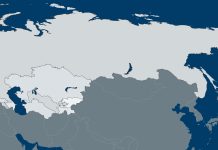China’s recent economic woes have not weakened Chinese President Xi Jinping’s resolve to consolidate his authority in the country’s three branches of power: the State Council, the Communist Party and the People’s Liberation Army. In fact, Xi’s military reforms and anti-corruption campaign have become all the more important, and it has also become clear that Xi will attempt to bring the vast, sprawling bureaucracy responsible for overseeing China’s financial markets under his writ as well. For China, there is no distinction between internal and external security. Beijing’s greatest fear is that outsiders will meddle in Chinese affairs if the cohesion of the regime breaks down. Maintaining discipline in the party and bringing the PLA to heel then are, in terms of security, no different than making sure that foreigners cannot take advantage of China’s fiscal and monetary policy struggles.
On Jan. 11, Xi convened both new and familiar leaders of the Chinese military, following a complete reorganization of the PLA’s command structure, and emphasized that they must “unswervingly follow” the orders and principles handed down by the Communist Party of China through the Central Military Commission. The next day, at the start of the Communist Party’s Central Commission for Discipline Inspection’s (CCDI) annual meeting, Xi stressed that discipline and party loyalty must be a step higher than the law. Also, on Jan. 12, sources told Reuters that the State Council was considering interim measures to manage its financial department until a new regulatory structure could be implemented. This came after numerous reports that Xi and the upper echelons of the Communist Party were displeased with last week’s stock market snafu.
There are four key observations to make from these developments, all of which are interrelated. The first is that each of these events noted above deal with Xi cultivating personalized power in all of the three branches of power in China. The PLA is the ultimate guarantor of the regime’s security, both internal and external. The Communist Party, which Xi is trying to make more efficacious and legitimate, is not just the founding and ruling political party of the People’s Republic of China but is a complex organization with 85 million members serving in both state and military organizations at every level. The State Council and China’s other state institutions are closely linked to the Communist Party but ultimately represent the vast professionalized bureaucracy that implements party directives on more local levels. Xi is telling each institution that it must toe his line.
The second observation is that Xi continues to push forward in asserting the Communist Party’s writ over the PLA. Rumors that discord was increasing between Xi and the military, along with the fact that many of the new commanders in the reformed military structure were in fact part of the previous structure and merely were moved around, suggest that Xi has had to compromise on at least some of his military reforms. Still, while many of the same faces remain in the PLA’s leadership, the creation of 15 new functional departments out of the four that previously existed means Xi was able to add new faces personally loyal to him in the system. And now that the reorganization is complete, Xi has wasted no time in stressing to all of these military leaders the importance of following orders and “discerning right from wrong.” This is a tug of war between Xi and the PLA, and momentum will swing back and forward. Both sides have an interest in making sure the regime survives – but Xi is attempting to convince the PLA it has an interest, not just in the regime’s survival, but in his own power.
The third significant observation is Xi’s personal involvement in the CCDI’s continued anti-corruption investigations. The CCDI is an organ of the Communist Party and its anti-corruption purges are aimed at forging the party into a tool that Xi can use to implement central directives from Beijing throughout the country. The purges are also good for Xi’s image and have created a popular image of Xi throughout China as a leader attempting to reinvigorate a structure that had become more concerned with personal advancement and wealth than with Communist Party principles or faithfully executing directives from the top leadership. An example of how the CCDI is accomplishing this can be seen in the announcement the disciplinary body made on Jan. 12, which stated that almost 34,000 party members had been subjected to discipline as a result of “frugality violations.” These violations included the personal use of official vehicles and both giving and receiving bribes. What is most remarkable is the fact that this data is routinely collected via a monthly reporting system that the CCDI has established in Chinese provinces, state-owned enterprises and financial institutions. While the CCDI does not shy away from high-profile leaders, arguably its more important function is ensuring that Communist Party officials at the local level are maintaining discipline and loyalty.
Lastly, it is important to keep China’s understanding of internal and external security in mind when understanding Chinese monetary policy. Last week, to add insult to the stock market injury, there was a sense both in China and in international markets that China’s left hand didn’t know what the right was doing. Circuit breakers put in place by the Chinese Securities Regulatory Commission (CSRC) had to be scrapped within four days of introduction because of the panic they induced on the Chinese stock market. Meanwhile, the People’s Bank of China (PBOC) seemed to be giving mixed signals, pumping liquidity into the market while weakening the yuan’s value against the U.S. dollar and largely remaining unresponsive to a gap that developed in onshore and offshore borrowing rates for the yuan.
The British took advantage of internal Chinese chaos during the Opium Wars, and the Japanese took advantage during their invasion of Manchuria in 1931. Though the current series of events is much smaller in scale, China faced a situation this past week where external actors were profiting from internal dysfunction. But it is precisely the kind of development which brings China’s strategic focus into light. China’s greatest fear is not just a loss of internal cohesion. Rather, China’s nightmare scenario is external forces taking advantage of internal Chinese chaos. Foreign investors were taking advantage of the gap that arose between the two values of the yuan and essentially challenging the PBOC over its control over the yuan’s stability. This is the type of internal threat that becomes an external threat, and is a microcosm of the very thing Xi and the Communist Party are guarding against.
The onshore/offshore yuan gap converged on Jan. 12, as the PBOC upped the ante and began buying up the yuan in the offshore market and selling U.S. dollars. The result was that there was less yuan on the market and the cost to borrow peaked as high as 66.82 percent, discouraging foreign investors from short-selling the yuan, or, in laymen’s terms, benefiting from a perceived inexorable decline in the yuan’s value. Even so, it is important to note that hints of top leadership anger at the handling of China’s economy and the subsequent rumors about reorganization at the top of the PBOC, the CSRC and the State Council’s finance department are more about the underlying fear of political instability than any of the particular monetary policies themselves. In the same way that Xi is attempting to centralize control of the bureaucracy and the military, China’s economic woes, in particular those stemming from last week’s stock market collapse, represent both a challenge and an opportunity for Xi to centralize the decision-making process in China’s sprawling array of regulatory bodies.
There has been friction between Xi and the military, and there will be more such disagreement at multiple levels of China’s governing structure. But everyone in the regime, from the bureaucrats to the generals to Xi himself, view a loss of political and social cohesion within China as a national security issue. Xi’s moves are an attempt to make it clear that his path is the regime’s best hope for guarding against internal fragmentation.







